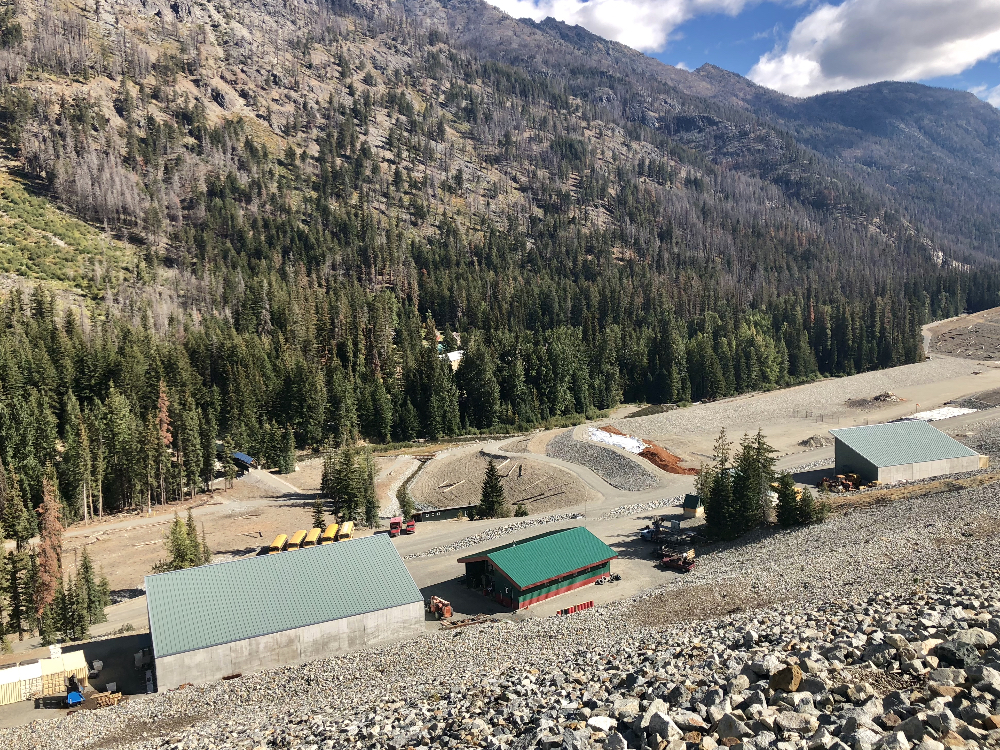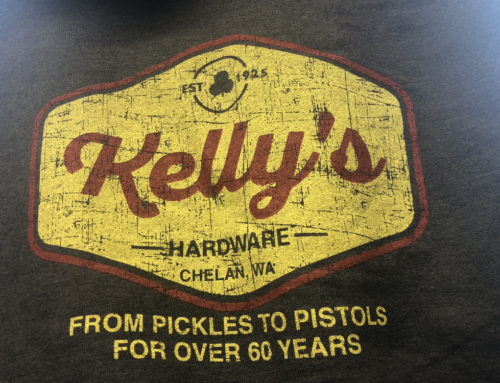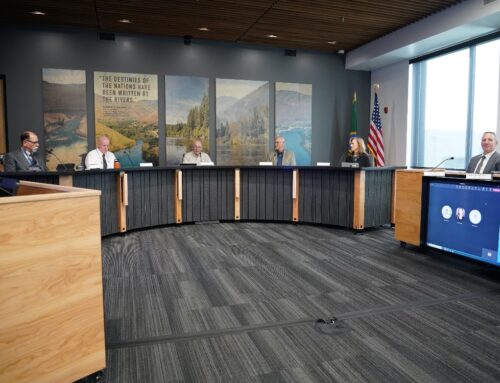Phase 1 of $500 Million Project Complete
Story, Photos and Video by Dennis Rahm
As someone who enjoys the beauty and tranquility of exploring upper Lake Chelan, I quickly accepted an invitation to be part of a Forest Service organized tour of the Holden Mine remediation project.
From 1937 to 1957, Holden was one of the largest operating copper mines in the United States. In the late 1980’s the mine was declared a Superfund by the Environmental Protection Agency. A Superfund is a U.S. Federal Government program designed to fund the cleanup of sites contaminated with hazardous substances and pollutants.
More than 20 years after that declaration, work began on cleaning up the site. Over the years, leaching metals from the mine have negatively impacted the water quality and aquatic habitat of Railroad Creek – one of the primary tributaries that flows into Lake Chelan.
In 1896, James Henry Holden made the first claim to the mining site. However, mining operations wouldn’t begin for another 41 years.
The mine was eventually purchased and developed by Howe Sound Company and would produce about 200-million pounds of copper, 40-million pounds of zinc, two-million ounces of silver and 600,000 ounces of gold. Approximately 60-miles of underground tunnels were excavated, and about 8.5-million tons of the mining tailings were left on 90-acres of Forest Service land near Railroad Creek. An additional 1.5-million tons of tailings were placed back into the mine. At the peak of the mining operations, Holden Village housed around 600 people including miners and family members.
After the mine was closed, about 100 housing structures located on Forest Service land were intentionally burned to the ground. Holden Village was subsequently purchased by the Lutheran Bible Institute for one-dollar and since that time has operated as a spiritual retreat center.
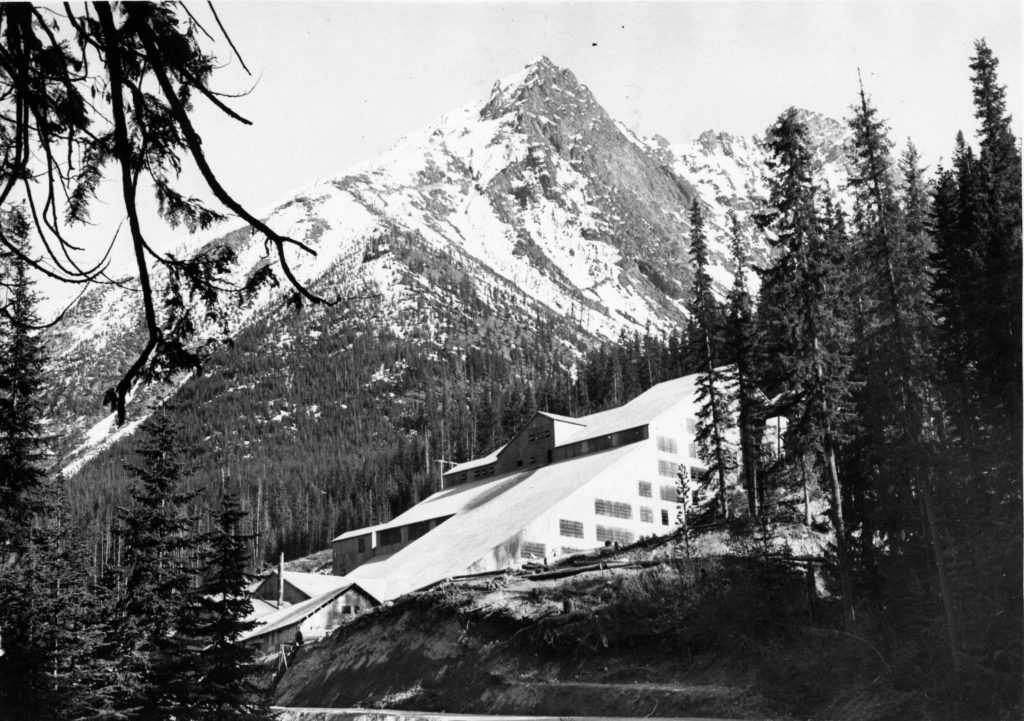
Photo courtesy Washington State Archives, item 24642.
Intalco would eventually acquire the former Howe Sound Mine and later became involved with the U.S. Forest Service, the EPA, Washington State Department of Ecology and the Yakama Indian Nation to actively work on developing a plan to clean up the site.
Rio Tinto, a global mining company, is managing the cleanup on behalf of Intalco and is paying for the entire cleanup despite never owning or operating the mine. Rio Tinto is managing the cleanup project due to a series of company acquisitions and legal transactions.
Phase One of the project is now complete to the tune of $500-million. Major components of work completed include regrading of the tailing piles, waste rock regrading and cover, quarry development, Railroad Creek realignment, underground barrier wall construction, Copper Creek lined channel construction and construction of the water treatment plant.
One highlight of the tour included walking on top of the underground barrier wall which is 3 to 5-feet wide and up to 90-feet deep. Because of glacier remnant boulders encountered during excavation, the wall became the project’s most challenging component. The barrier wall is nearly a mile long and completely underground.
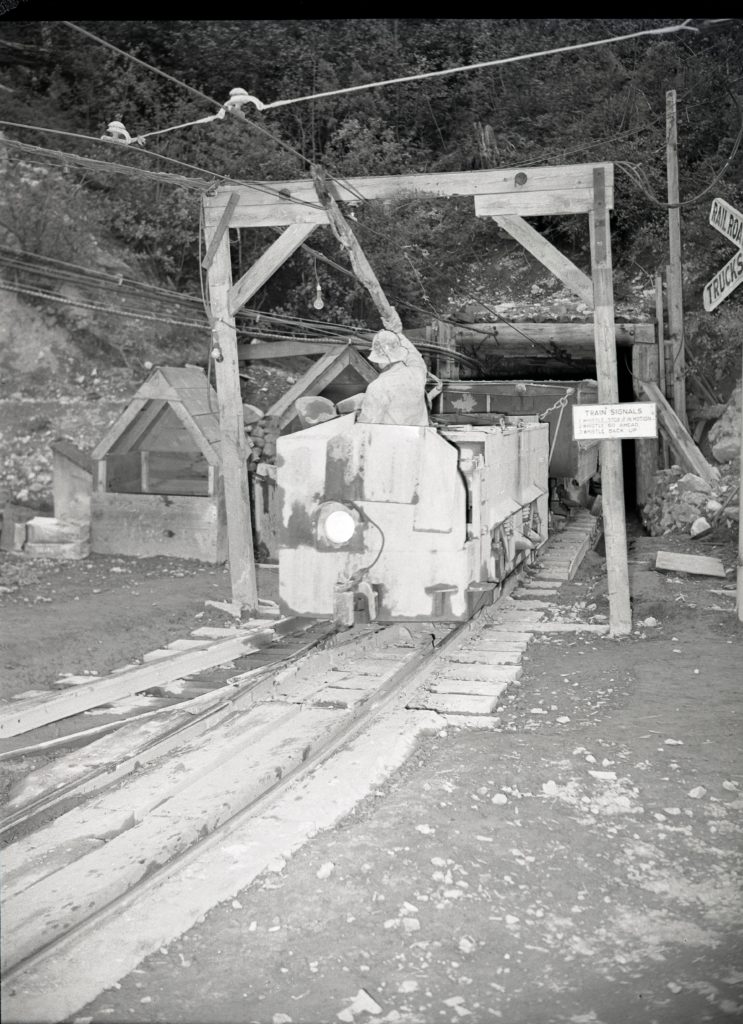
Photo courtesy of Washington State Archives
Perhaps the most impressive part of the tour, at least for me, involved the water treatment plant. Located downstream of the tailings piles, the structure is huge in size and as high-tech as they come. The plant is where the water coming out of Railroad Creek is neutralized and filtered using lime and other chemicals. Once treated, the water is then discharged back into Railroad Creek in order to meet clean water standards. A byproduct of this plant is an inert sludge which is then stored in a repository on the regraded tailings. One more note on the water treatment plant….it is designed to operate 24/7 over an 85-year period.
As mentioned previously, the tab on the completed Phase-one of the project is $500-million. Current and ongoing maintenance costs are not included in that figure. Over the next few years the work completed will be assessed and analyzed before a determination is made as to whether more cleanup needs to be done.
While you won’t likely get a tour of the water treatment plant, the area of the mine cleanup is accessible to the public. Eventually interpretive trails and signs will tell the story of the large scale cleanup. Holden Village will also be housing a new Holden Mine museum as the former museum site in the old mill building was demolished as part of the project.


